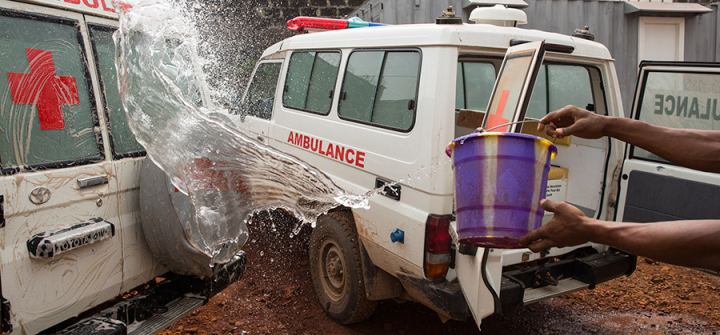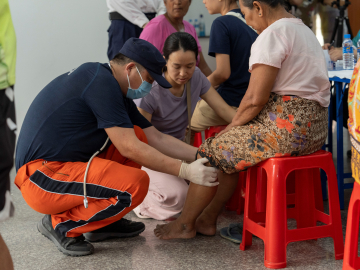Time to Shake Up Emergency Response
“Good intentions are not good enough:” was the key message that resonated at the WHO Global Meeting of Emergency Medical Teams in Hong Kong in late 2016.
Unlike other medical disciplines, charity, rather than results, traditionally drives disaster response, with teams working to variable standards and little accountability. When a disaster occurs, uncoordinated responders flooding in pose a substantial burden and can exact a great deal of harm.
The WHO Emergency Medical Team (EMT) Initiative is rapidly developing to confront these pitfalls and is set to dramatically change the future of emergency response. In the coming years there will be no room for solo workers or unqualified disaster tourists to come and lend a hand. Instead, registered and quality assured teams will be intentionally selected by the host country to come and fill gaps in local capacity. The future looks very different from the stories that are still coming out of Haiti after the earthquake in 2010: stories of amputations being done without anaesthetic and unaccompanied children being taken away—all with “good intentions.” After cyclone Pam in early 2015, in Vanuatu, it took a whole week of navigating red tape before our team could be deployed to areas in need, lengthy registration and poor co-ordination delaying the delivery of essential care. Even earlier this year in the aftermath of tropical cyclone Winston, we found uninvited volunteers in Fiji doing ‘relief work:’ perhaps bringing water filters or tarpaulins but simultaneously relying on hard-hit communities to feed them and provide accommodation.
So how will the EMT Initiative improve the status quo? The main effort to date has been the establishment of minimal technical standards and commencing the verification and classification of existing teams according to level of care provided. So far 6 teams have achieved full WHO EMT status and a further 75 are in progress. The emphasis is to build national response cells first or, “as local as possible and as international as necessary.”
The initiative also provides a platform for dialogue on ethical issues, training and how emergency response fits in to the broader context of humanitarian aid. How can increasingly specialised surgeons continue to have a role in the emergency field hospital? Is it ethical to only respond to disasters which have minimal security risk? What is the role of public health in the early response and how can we develop exit strategies that align with long term development?
These questions and more will continue to challenge the global EMT community as it takes strides towards a new vision of emergency response. As the project develops, the hope is to see more and more self-sufficient and quality teams delivering care that is well-coordinated, predictable and fast. There is immense opportunity here to work together, saving more lives and treating crisis-affected populations with greater dignity and respect.
Danielle de Zeeuw, MBChB is the medical co-ordinator of RescueNet Australia.
UN Photo/Martine Perret.




